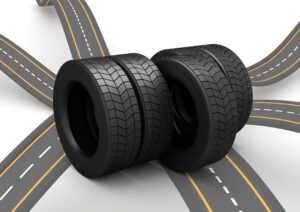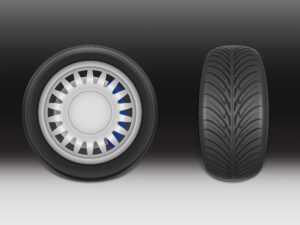Car Tyre Sizes List: Find the Right Fit for Your Car

Choosing the correct car tyre size is essential for ensuring your vehicle’s safety, efficiency, and performance. Our Car Tyre Sizes List offers a detailed look into understanding tire dimensions, helping you make an informed decision for your vehicle—whether it’s a sedan, SUV, or truck. With this comprehensive guide, you’ll learn how tyre size affects handling, fuel economy, and ride quality. From understanding sidewall markings to exploring different types and sizes of tyres, we’ll provide everything you need to select the perfect tyres.
Why Knowing Your Car Tyre Size Matters
Selecting the right car tyre size is about more than just finding a fit for your wheels; it directly impacts safety, fuel efficiency, and overall driving experience.
- Safety: Properly sized tyres improve road grip and handling, particularly during turning and braking. An unsuitable tyre size could cause issues with stability, especially in wet or slippery conditions.
- Fuel Efficiency: Tire size affects your car’s rolling resistance. Using a Car Tyre Sizes List to select an appropriate size reduces strain on the engine, ultimately improving fuel economy.
- Driving Performance: Optimal tyre size enhances steering response and traction, contributing to a smoother ride. The right standard car tyre size can make your vehicle feel more stable and responsive on the road.
How to Read Car Tire Size Markings
Deciphering the tyre markings can seem complicated, but this guide will simplify it for you. Most tyre sizes are marked as a series of numbers and letters like P215/55R17 91T. Let’s break down the components:
| Marking | Example | Meaning |
| Width | 215 | Tire width in millimeters (distance between sidewalls) |
| Aspect Ratio | 55 | Ratio of sidewall height to width, shown as a percentage |
| Construction | R | Indicates radial construction, common in modern tyres |
| Diameter | 17 | Diameter of the wheel rim in inches that the tyre fits |
| Load Index | 91 | Maximum load capacity each tyre can handle |
| Speed Rating | T | Maximum speed capability for the tyre |
Example: P215/55R17 91T
In this size, 215 represents the tyre width in millimeters, 55 is the aspect ratio (indicating sidewall height is 55% of the tyre’s width), and R denotes radial construction. 17 is the diameter of the wheel rim in inches. The Load Index (91) corresponds to the tyre’s maximum weight capacity, and Speed Rating (T) shows the top safe speed.
This format is part of the car tyre sizes list and is crucial for understanding what tyre size suits your vehicle best.
Types of Tires and Their Sizes
Your vehicle’s needs can vary based on climate, terrain, and driving habits. Below are the primary types of tyres you’ll find on a car tyre sizes list, each with specific purposes:
- Summer tyres: Designed for warm, dry weather, these tyres offer improved grip on dry roads. However, they can harden in colder weather, so they’re less effective on icy surfaces.
- Winter Tires: Essential for cold, snowy climates, winter tyres have a deeper tread depth and softer rubber compound for better grip on icy roads.
- All-Season Tyres: Popular due to their versatility, all-season tyres combine elements of summer and winter tyres. While not as specialized, they work adequately across moderate weather conditions, making them a good option for regions without extreme weather.
- Performance Tyres: Created for high-performance cars, these tyres have a lower profile and wider tread to enhance handling at higher speeds. Ideal for sports cars, they provide additional cornering stability but may have a shorter lifespan.
- Run-Flat Tyres: With reinforced sidewalls, these tyres allow you to drive for a limited distance even when flat, providing extra safety until you can get a replacement.
Car Tyre Sizes List for Popular Models in India
Choosing the correct tyre size is essential for each vehicle type. Below is a Car Tyre Sizes List for some of the most popular car models in India, helping you find the right fit.
| Car Model | Tyre Size | Purpose |
| Maruti Swift | 185/65 R15 | Standard passenger car |
| Hyundai Creta | 215/60 R17 | SUV/Urban driving |
| Tata Nexon | 215/60 R16 | Compact SUV |
| Honda City | 185/55 R16 | Family sedan |
| Toyota Innova | 205/65 R16 | Multi-purpose vehicle (MPV) |
| Mahindra Scorpio | 235/65 R17 | Off-road SUV |
These tyre sizes by car model are factory-recommended and contribute to the best balance between performance, efficiency, and safety for each car.
Factors to Consider When Selecting Tire Sizes
When choosing from a car tyre sizes list, consider these essential factors:
- Load Capacity: Ensure the tyre load index matches your vehicle’s weight requirements. If you frequently carry heavy loads or travel long distances, select a size with a higher load capacity.
- Tread Pattern: The tread pattern varies by climate and terrain. Deeper treads are ideal for wet or snowy conditions, while all-season patterns are suited to moderate climates.
- Manufacturer Recommendations: Using a car tyre size chart with sizes recommended by your car’s manufacturer ensures compatibility with your car’s specifications, leading to optimal handling and longevity.
Practical Tips for Buying Tires Online
Purchasing tyres online offers a wide selection, but here are some best practices to ensure a smooth experience:
- Confirm Tyre Sizes: Double-check the tyre size that corresponds to your car model before placing an order. This avoids costly returns or incompatibility issues.
- Compare Prices: Explore different brands in your desired size range for quality and value. Often, you’ll find competitive pricing online, even for premium brands.
- Look for Installation Options: Some online retailers offer installation services or recommend nearby fitment centers. Taking advantage of these can make the process more convenient.
CTA: Simplify Tire Selection and Fitting with KwikFix Auto
If you’re looking for a convenient tyre fitting experience, KwikFix Auto offers reliable tyre and battery services with same-day doorstep fitting and emergency roadside assistance. Whether you’re searching for the perfect car tyre size or need expert help with on-site installation, KwikFix Auto’s comprehensive services will keep you on the road safely and confidently.
Download the KwikFix Auto app today and enjoy professional automotive services right at your location!
Frequently Asked Questions
Q1. What is the most common car tyre size?
A1. The most common tyre sizes on the car tyre sizes list include 185/65 R15 and 205/55 R16 for standard passenger vehicles.
Q2. How do I determine the correct tyre size for my car?
A2. You can find the recommended size on the sidewall of your existing tyres, in the owner’s manual, or by consulting a car tyre size chart.
Q3. Can I use a different tyre size than recommended?
A3. It’s possible to change tire sizes, but staying close to the manufacturer’s guidelines ensures safety and compatibility.
Q4. How does radial tyre construction differ from other types?
A4. Radial tyres (marked “R”) have flexible sidewalls, enhancing comfort. Bias-ply tyres are stiffer and are mainly used for heavy-duty applications.
Q5. How does tyre size affect speedometer accuracy?
A5. Larger tyre diameters cover more ground per rotation, leading to slower speedometer readings compared to actual speed.
Q6. Does wider tyre width improve fuel efficiency?
A6. Wider tyres can reduce fuel efficiency due to increased rolling resistance, so using a standard car tyre size can help maintain optimal fuel economy.
Q7. Do high-performance tyres make a difference?
A7. Performance tyres offer better grip, especially in dry conditions, which enhances cornering and braking at high speeds.
Q8. How frequently should I check my tyre pressure?
A8. Monthly pressure checks ensure optimal tyre performance and longevity, as well as safety on the road.
Relate Articles
Car AC Gas Filling Cost | Electric Car Battery Capacity | How Car AC Works | How to Clean Car AC Filter | Car AC Repair Cost | AC Chair Car vs Executive Chair Car | Which Gas is Used in Car AC | Does AC in Car Consume Fuel | Why My Car AC is Not Cooling | Xylo Car Mileage with AC





